Garden peach trees are fast-growing crops: the harvest can be gathered as early as 3-4 years after planting. Peaches require careful maintenance, so gardeners regularly carry out agrotechnical measures: watering, fertilizing, loosening, and spraying. One of the essential care procedures is spring pruning. The quality and taste of ripe fruit depend on it.
This article explains what spring pruning entails and highlights key nuances to pay attention to.
Table of contents
Objectives of Spring Peach Pruning
Spring pruning enhances yield and prevents diseases. The procedure improves sunlight exposure, makes harvesting easier, and regulates fruit quantity. Without pruning, the tree becomes prone to diseases, shoots grow chaotically, and the fruit’s taste and marketability decline.
Pruning is done during bud swelling. This is when it’s easiest to identify unnecessary shoots. Some gardeners prune in autumn, but this weakens the tree before winter, increasing the risk of frost damage and reducing future harvests.
Beginner gardeners may struggle with spring pruning. Many are unsure which shoots to remove first, which tools to use, or the optimal timing for the procedure.
When to Prune in Spring
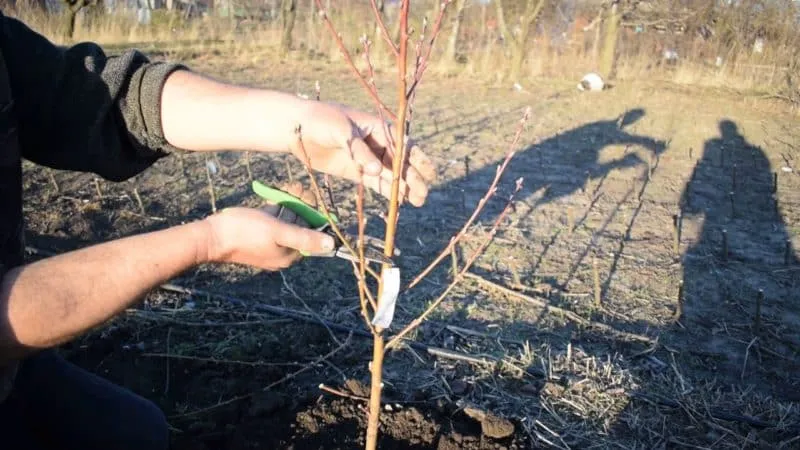
Prune peaches when nighttime temperatures reach around +5°C. In southern Europe, such as Spain or Italy, this is late March; in Central Europe — early April; in colder regions like Scandinavia — mid to late April. The tree awakens from winter dormancy, and pink buds begin to swell. From this point, you have 2-3 weeks to prune before flowering begins.
Note: Choose dry, sunny days for pruning. Avoid rainy, foggy, or windy weather.
Pruning during flowering is not recommended. Doing it too early risks bud damage from lingering frost.
Types of Pruning
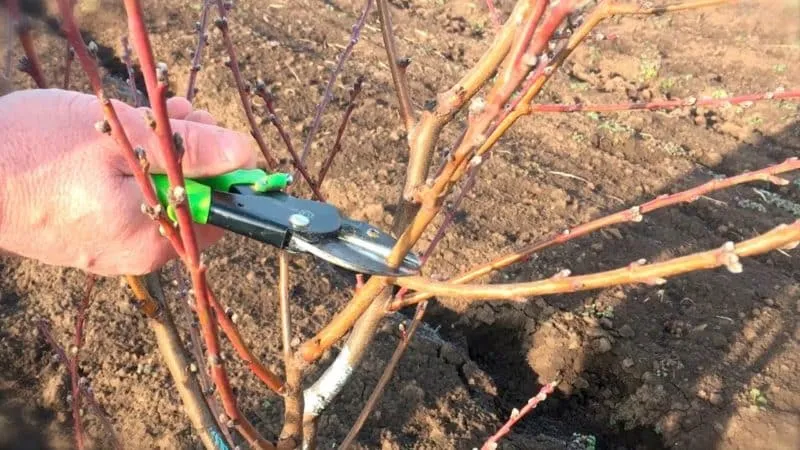
There are three main pruning types: formative, rejuvenating, and regulatory.
Formative pruning shapes the crown of young trees (under 4 years old). Gardeners often train the crown into a vase shape. In the first year, the tree is shortened by 50 cm to encourage branching. The next year, 3 strong shoots are selected and shortened above the 2-3rd bud, while others are cut back to the growth point. In the third year, developed scaffold branches are trimmed by a third, and all suckers are removed. The process repeats in the fourth year.
Rejuvenating pruning is performed 7 years after the first fruiting to extend the tree’s lifespan. Shoots older than 5 years are removed. This is done annually until the tree reaches 15 years, as older trees struggle with such stress. Rejuvenation stimulates new growth, boosts yield, and improves light penetration.
Regulatory pruning controls shoot growth during fruiting. Thick, overproductive branches are removed, along with broken or damaged shoots that hinder new growth. This applies to trees of any age.
How to Prune a Peach Tree
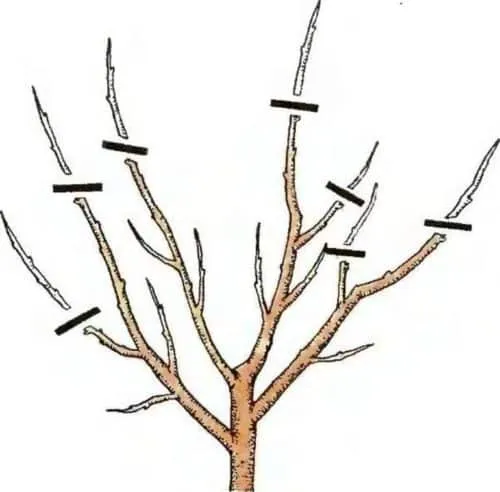
Besides choosing the right day, gardeners must prepare tools and select a pruning method.
Required Tools and Materials
Use pruning shears for thin branches, a grafting knife for rough edges, and a saw for thick limbs. For tall trees, a ladder and long-handled pruners are helpful.
Note: Disinfect tools with a solution of Bactosol (50 ml per 5 L water) or copper sulfate (5%). Soak tools for a minute, then dry thoroughly. Sharp tools ensure clean cuts and faster healing.
Step-by-Step Guide
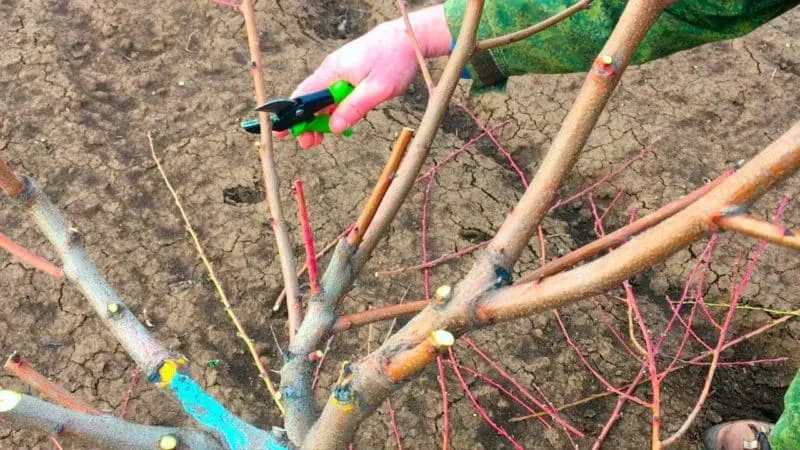
Follow these steps to avoid over-pruning:
- Prepare sharp tools.
- Inspect the tree.
- Remove diseased branches first (showing mold, cracks, or spots). Burn them away from the garden.
- Cut broken or inward-growing branches that shade others.
- Eliminate forked branches and those growing at sharp angles.
- Remove vertical "water sprouts" on scaffold limbs.
- Thin out dense areas of the crown.
Pruning Techniques
The "ring cut" method rejuvenates older trees. Select a branch, mark 0.5 cm from the growth point, make a preliminary cut 30 cm above, then finalize at the mark. The ring-shaped callus speeds recovery.
The "bud cut" technique manages crown density. Choose outward-facing buds, mark 5 mm above the top one, make a preliminary cut 30 cm up, then finalize. Avoid removing more than a third of branches at once.
The "stub cut" approach maintains permanent fruiting wood. After a bud cut, leave several eyes. Next year, pinch the lower new shoot and trim the upper one to 2 eyes. This keeps fruit production on the same shoots.
Post-Pruning Care
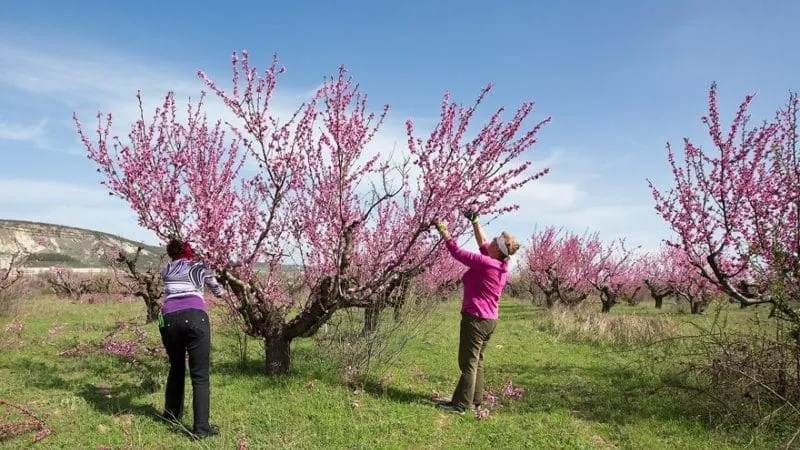
Treat cuts with linseed oil or antiseptic: These prevent moisture damage and fungal infections. Large cuts are fully covered; for 3-4 cm wounds, only edges need treatment. Some gardeners use pruning sealant.
Conclusion
Spring pruning ensures healthy growth and consistent fruiting. Remove old, dry, and inward-growing branches using ring, bud, or stub methods. Young trees need formative pruning, mature ones regulatory cuts, and older trees rejuvenation. Always disinfect and sharpen tools, and treat cuts promptly. Timing varies from late March in warmer regions to April in cooler climates.







